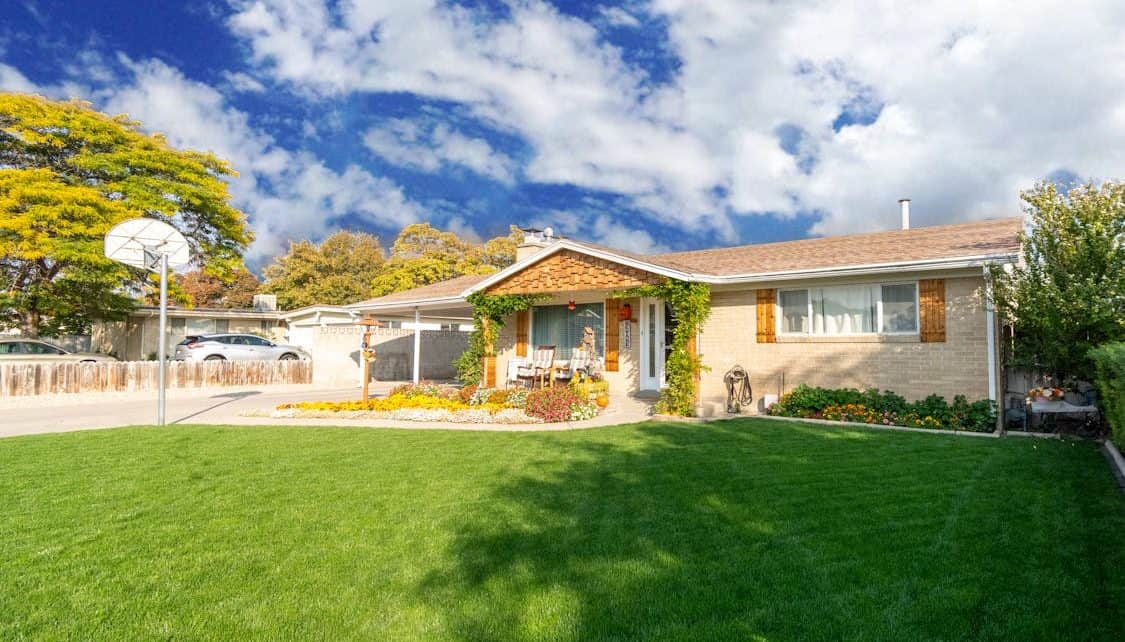As the sun shines brighter and temperatures rise, many homeowners find themselves questioning whether artificial grass can withstand severe heat.
This article dives deep into the topic, exploring the materials and characteristics of synthetic lawns, the effects of heat, maintenance tips, and the future of artificial grass in high-temperature regions.
What is Artificial Grass Made Of?
Artificial grass, often referred to as synthetic turf, is constructed from a variety of materials, primarily polyethylene, polypropylene, and nylon.
Polyethylene is the most commonly used material due to its softness and durability, making it feel more like natural grass. Each of these materials comes with its own set of properties that can affect how the lawn reacts to extreme heat.
Material Composition
The composition of synthetic grass plays a pivotal role in how it performs under high temperatures. The fibers used are designed to mimic natural grass, but they can also retain heat.
For instance, nylon is the most heat-resistant but can become uncomfortably hot under direct sunlight. In contrast, polyethylene remains cooler but may not withstand the highest temperatures as well.
Heat Resistance and Performance
One of the primary concerns about artificial lawns in extreme heat is how they manage temperature. Unprotected surfaces can heat up significantly, sometimes reaching temperatures that are uncomfortable for people and pets.
Fortunately, modern turf designs are built to resist UV radiation and maintain their colour intensity, ensuring they remain vibrant despite prolonged sun exposure.
Thermal Conductivity
The thermal conductivity of synthetic grass can lead to heat retention. When temperatures rise, artificial grass absorbs and holds heat, which can create a scorching environment.
However, advancements in technology have led to the development of heat-resistant materials that are designed to mitigate this issue. Some manufacturers add cooling agents to their products, aiming to reduce the surface temperature.
Color and Heat Absorption
The color of the artificial grass also affects its ability to handle heat. Darker shades absorb more sunlight and heat, making them hotter, while lighter colors reflect sunlight, keeping temperatures lower.
Homeowners should consider this aspect when choosing the color of their synthetic lawn, especially in regions that experience prolonged heat.
Longevity in Hot Climates
When installed correctly, artificial grass can last for many years, even in extreme heat. However, its longevity is contingent upon several factors, including the quality of the materials and the installation process.
Quality of Installation

A professional installation can significantly impact how well artificial grass performs in extreme conditions. Proper drainage and infill materials can help reduce heat retention and maintain the integrity of the lawn.
Inadequate installation can lead to issues such as buckling or fading, particularly in areas exposed to intense sunlight.
Maintenance Practices
Regular maintenance is key to prolonging the life of an artificial grass lawn. This includes periodic brushing and rinsing to remove debris and keep the fibers upright. In hot weather, it’s beneficial to occasionally wet the surface with a hose, which can help cool it down and enhance its usability.
Environmental Considerations
Artificial grass has been touted as an environmentally friendly alternative to natural grass due to its low maintenance needs and water conservation benefits. However, how it performs in extreme heat can have environmental implications.
Water Conservation
One of the most significant advantages of synthetic grass is its ability to save water. Unlike natural lawns that require regular watering, artificial grass maintains its appearance without the need for irrigation. This can be especially beneficial in drought-prone regions where water conservation is critical.
Heat Island Effect
Urban areas often experience higher temperatures than surrounding rural areas, known as the urban heat island effect.
While artificial grass can help reduce the need for water in these regions, its heat-retaining properties can contribute to this phenomenon. Careful consideration must be given to how synthetic lawns are integrated into urban environments.
Options for Cooling Synthetic Grass
There are several strategies for keeping artificial grass cool, especially in areas that experience extreme heat for extended periods.
Use of Infill Materials
Infill materials, such as sand or rubber, can help improve drainage and reduce heat absorption. Some infills are designed specifically to reflect heat, further cooling the surface. Choosing the right infill can make a significant difference in the temperature of the lawn.
Shade Solutions
Creating shaded areas over artificial grass can help reduce surface temperatures. Whether through natural shade from trees or man-made structures like pergolas, shade can protect the lawn from direct sunlight, extending its lifespan and usability.
Common Misconceptions About Artificial Grass in Heat
There are several myths surrounding artificial grass and its performance in extreme heat. It’s essential to separate fact from fiction.
Melting Concerns
One common myth is that artificial grass can melt in high temperatures. While synthetic materials can soften if exposed to extreme heat for extended periods, this is rare under normal conditions. Proper installation and maintenance can greatly reduce the risk.
Cooling Techniques
Some homeowners believe that artificial grass will remain perpetually hot, making it unsuitable for pets and children. However, with the right cooling techniques and materials, synthetic lawns can be quite comfortable, even during hot summer days.
The Future of Artificial Grass Technology
With advancements in technology, the future of artificial grass looks promising, especially concerning its performance in extreme climates.
Innovative Materials
Researchers are exploring new materials that offer better heat resistance and lower temperature retention. These innovations could lead to synthetic lawns that are not only more durable but also more user-friendly in hot environments.
Smart Technology Integration
Some companies are developing smart technology to monitor and manage the temperature of artificial lawns.
By integrating sensors that can adjust irrigation systems or activate cooling features, homeowners may find themselves with lawns that are consistently comfortable, regardless of external conditions.





